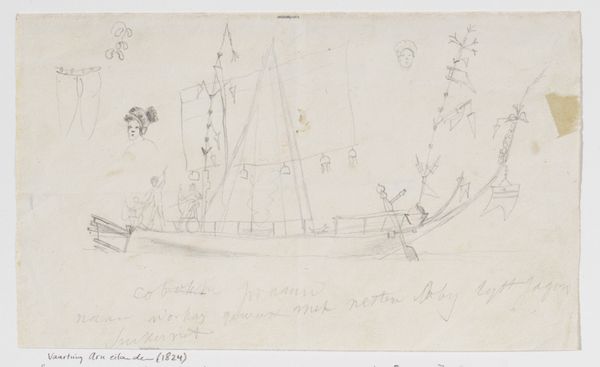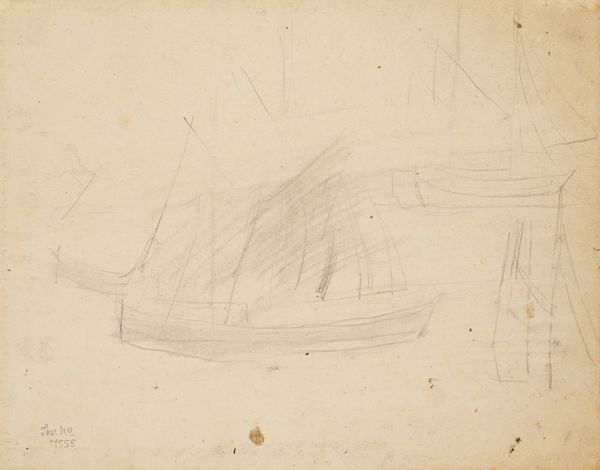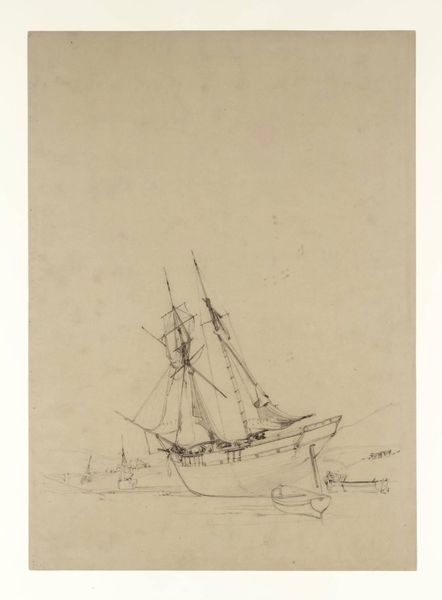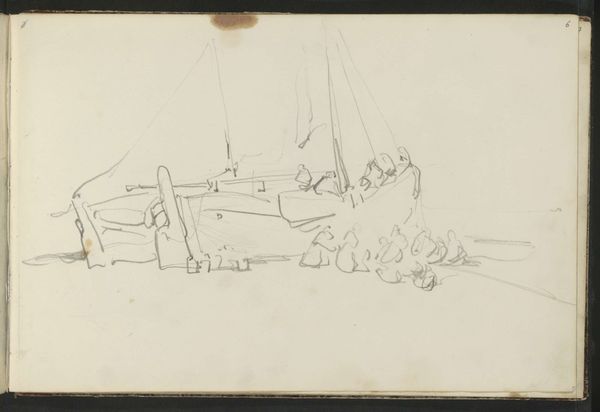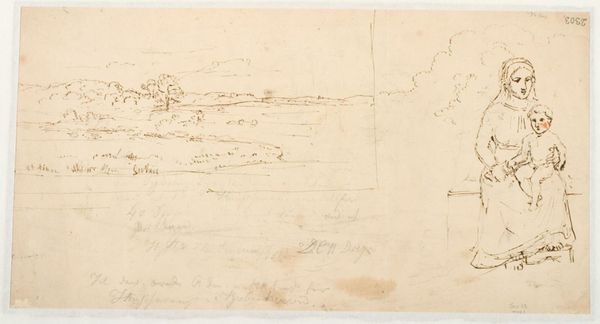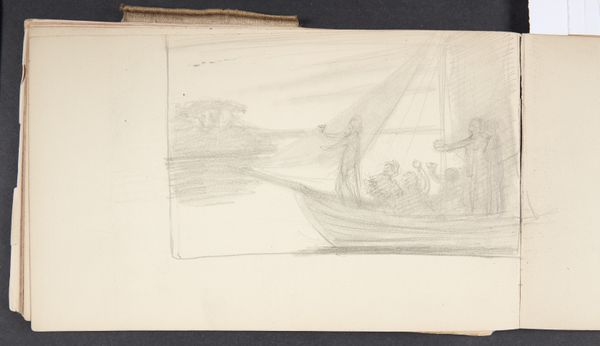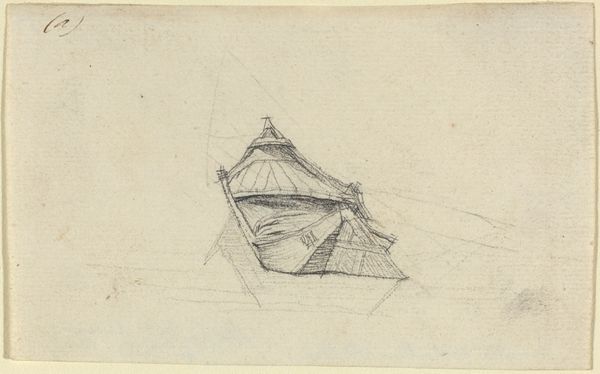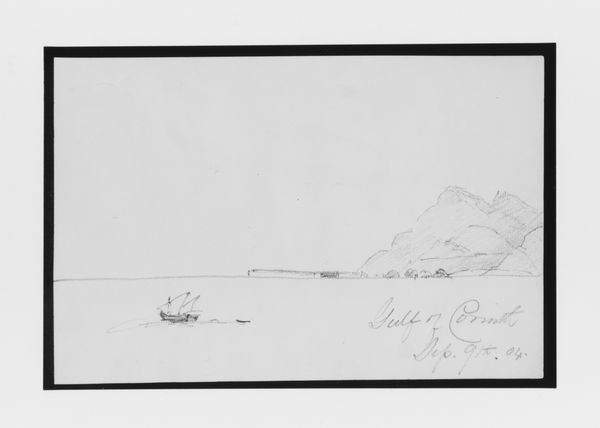
drawing, pencil
#
drawing
#
landscape
#
etching
#
figuration
#
pencil
#
islamic-art
#
realism
Dimensions: height 182 mm, width 230 mm
Copyright: Rijks Museum: Open Domain
Curator: Here we have Adrianus Johannes Bik’s pencil and etching drawing, “Islamitische vorstelijke graven in West-Java,” dating roughly between 1816 and 1846. Editor: My initial impression is one of quiet reverence. The soft pencil lines and muted tones create a solemn and reflective atmosphere. There is something ethereally delicate about this piece. Curator: Absolutely. The drawing captures, in subtle detail, the forms of royal Islamic tombs. Consider how Bik, likely influenced by his time in Java under colonial rule, approaches this depiction. It allows us a window into his perception of local power structures and religious traditions. The artist labels the tomb closest to us as being of “Rato [Rate] Sigiri, wife of Abdul Hamit”. Editor: Knowing it was drawn during the Dutch colonial period adds another layer. Was he trying to document, exoticize, or perhaps even legitimize existing hierarchies through his art? The act of representation itself is fraught. As a landscape it certainly reads with some documentary intentions. Curator: His style, marked by realism, invites the viewer to contemplate the artistry embedded within Islamic architecture. The repeated forms and attention to detail seem designed to emphasize both cultural specificity and religious identity. It feels very descriptive rather than emotional, or am I off? Editor: Well, beyond any descriptive intention, the muted color and almost ghost-like architectural drawing hints at the very temporality of power. A visual rendering, if you will, of "ashes to ashes." And considering that this drawing immortalizes the wife of Abdul Hamit is quite intriguing. I’d be very curious to know the artist's social position when producing the piece and who commissioned it, if anybody at all. Curator: That's a great point, because we see these royal Islamic graves now presented, centuries later, within the walls of the Rijksmuseum—it highlights complex patterns of cultural exchange, power dynamics, and shifts in how such imagery functions in our collective consciousness. Editor: Exactly, and art becomes this conduit for understanding the interwoven nature of history, empire, and identity, constantly demanding we question the narratives being presented. The artwork remains so potent as it invites reflection not only on its surface, but within the depths of the contextual ocean that brought it into being.
Comments
No comments
Be the first to comment and join the conversation on the ultimate creative platform.

